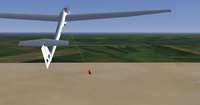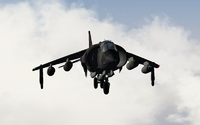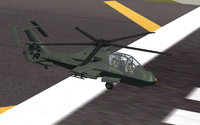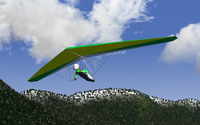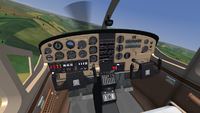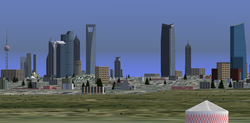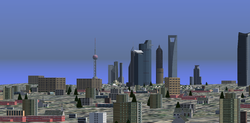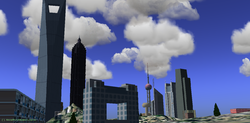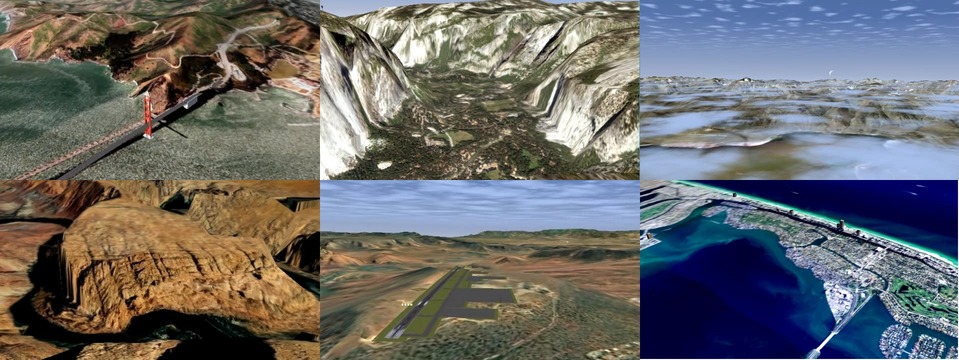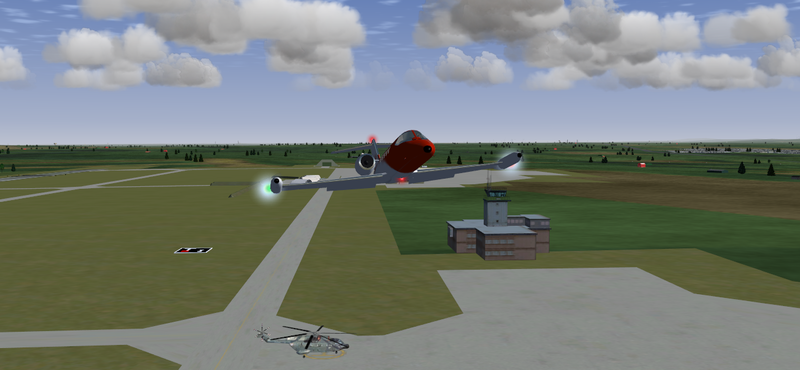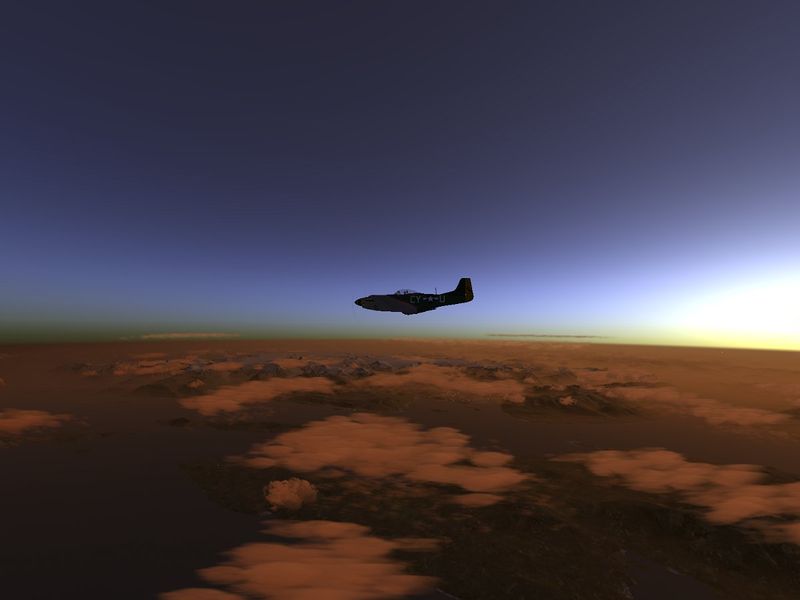FlightGear Newsletter February 2012
|
We would like to emphasize that the monthly newsletter can not live without the contributions of FlightGear users and developers. Everyone with a wiki account (free to register) can edit the newsletter and every contribution is welcome. So if you know about any FlightGear related news or projects such as for example updated scenery or aircraft, please do feel invited to add such news to the newsletter.
FlightGear 2.6.0 released
Following our release plan, version 2.6.0 of our simulator has been released! This new version contains many exciting new features, enhancements and bugfixes. Major improvements from v2.4.0 include reduced AI aircraft load times, easier graphics tuning, more sophisticated AI aircraft and improved usability. Please check the release announcement for a complete overview of what has changed since our last release 6 months ago.
Downloads are available from our website.
At the moment, we do not yet have sufficient community feedback from people running FG 2.6.0 - your help in updating the wiki would be appreciated. Please see Hardware Recommendations and Notebooks for FlightGear 2.6.0.
Development news
Heads up: Project Rembrandt
As many of you may have heard already, Fred is currently making huge progress on adding shadows to FlightGear in Project Rembrandt. Now, F-JJTH ported the P92 to use the new system and posted a youtube video demonstrating Project Rembrandt at work. To provide feedback, please check out the the forum thread ![]() .
.
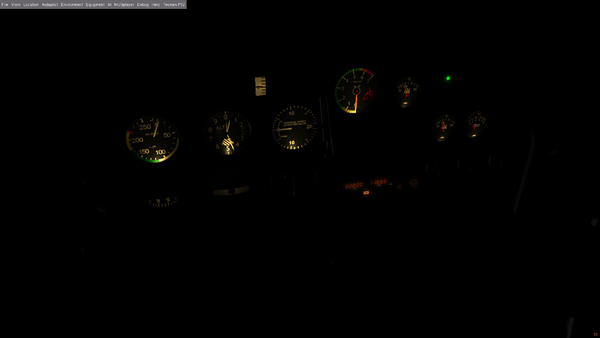
|
Interview with a contributor (Christian Schmitt)
In each edition we have an interview with a contributor. Suggestions for possible questions are available on interview questions, you are invited to come up with new questions and interview ideas obviously! Anyone is free to write an interview (with him-/herself or others) for next month's newsletter! If you'd like to help interview a contributor or get interviewed, please do consider adding yourself to the list of interview volunteers!
Read this and previous interviews at our website's archive.
- What is your forum/IRC nickname?
Surprise: it's papillon81. Yes, I'm that guy :)
- How long have you been involved in FlightGear?
Acording to my mail correspondence it must have been in 2007/2008 when I became an active part. I was unsatisfied with the state of EDDF in the FG scenery (no buildings, lightpoles everywhere), so I teamed up with a guy who had already started some work there. I ended up creating all of the terminal buildings and improving the airport layout. In those days, not many pilots were flying there. This changed in the months afterwards, which was a big boost of motivation, too.
- What are your major interests in FlightGear?
My main interest is clearly the scenery and technology connected with it, like GIS. I started to create some custom scenery, like Helgoland, and after I was granted direct access to the mapserver database, I was able to proxy-commit other peoples work, that started to come in. IMHO, the best FDM or aircraft models are useless if you don't have a nice place to fly, takeoff and land :) So this area is what motivates me the most.
I do also maintain the Gentoo packages (ebuilds) for the GIT versions of FG, SG and TerraGear. All these can be found in the Gentoo Gamerlay repo.
- What project are you working on right now?
Some months ago I was fed up of FG being unable to read apt.dat 850 data. So I started digging into the terragear code. Having no experience with C++, it was a steep learning curve, but to my own surprise I was able to convert the original TG parser to read the runway data and other features from the new format files. I started to implement as many features I was able to. Luckily, Pete was already working on the taxiways and surface features. So we teamed up and eventually merged our work together. Since then it has become a really great project to learn and improve FG along the way for me. I hope it will be put into use for the next scenery version. Before that can happen, we need more testers and bug reports (hint! hint! hint!) :)
- What do you plan on doing in the future?
I will continue to work on Terragear, commit some improvements to the Concorde (my favorite plane in FG) and take care of merge requests. I'd also like to dive more into the FG/SG code and do some adjustments here and there. We'll see what else the future might bring :)
- Are you happy with the way the FlightGear project is going?
I'm actually very happy with it. The improvements from 2 years ago up to now are breathtaking. Sometimes it is just amazing what features people start to work on, like Project Rembrandt right now. Also, the work that went into the weather and shader system recently is amazing.
- What do you enjoy most about developing for FlightGear?
The fact that we support each other and have a strong community with many very capable people from completely different backgrounds. Knowing that you can build on the work of others and that there is a helping hand in case of problems. Personally I like the FG IRC channel a lot.
- What advice can you give to new developers who want to get started on their first aircraft/new feature/Nasal script?
They should first of all have some experience with FG in general, meaning, they should have used the program for some time. We often have people asking questions that they could answer for themselves just by USING FG a bit with different aircraft for a bit longer than just a day or so. If they identify an area where they want to start developing, they should get in contact with the maintainer(s) and seek advice before investing many hours of work.
Read this and previous interviews at our website's archive.
In the hangar
All the way back in May 2011, we addopted a new status-rating system for aircraft. So far, only a few have actually been rated, as can be seen on the aircraft download page. If you're an aircraft developer and your aircraft is/are not on the list, please consider rating their status. All you'll need to know/do is described at Formalizing Aircraft Status. If you'd just like to get started contributing to FlightGear, this would also seem like an excellent way to get started.
A new instrument: Vertical Situation Display
Omega95 has created an entirely new instrument type for FlightGear, a so called Vertical Situation Display (VSD).
This was done entirely in scripting space using Nasal and XML animations. He's basically proven everbody wrong who ever claimed that complex instruments couldn't yet be created in scripting space. Apparently, he managed to create this instrument in less than 24 hrs. His first question related to this was about accessing trigonometric functions from Nasal, shortly thereafter he posted screen shots depicting his VSD.
To read up on the whole discussion, please see the forum topic ![]() . There's work ongoing to turn his project into a new tutorial for the wiki on creating complex instruments in scripting space: Howto: Implement a Vertical Situation Display in Nasal.
. There's work ongoing to turn his project into a new tutorial for the wiki on creating complex instruments in scripting space: Howto: Implement a Vertical Situation Display in Nasal.
Glider winch launching ropes
Before now, FlightGear never showed ropes during winch launching. However, now, you will no longer have to fly gliders while being pulled by some invisible connection between you and the winch.
Gijs started working on an animated 3D rope, attached to the glider and winch. The cable exist of the following parts:
- Strop (3 m) attached to the glider with a ring.
- Weak link assembly designed to break apart before the cable or any other equipment fails.
- Trace (17 m)
- Parachute so the cable doesn't drop too quickly after releasing.
- Launch cable the longest part; all the way to the winch.
New aircraft
Hawker Siddeley Harrier GR.1
Hawker Siddeley Harrier GR1 is a private project by pjedvaj, it was not intended to replace or update the existing British Aerospace Harrier. It has a detailed 3D model complete with a cockpit, animations and RAF livery. Instruments and HUD are also fairly authentic. The aircraft has working ADEN guns and basic fuel and weight control. The FDM is adapted from the original BAe Harrier, but internal and external fuel tank capacities are modified to match the GR.1 version.
Boeing-Sikorsky RAH-66 Commanche
Boeing-Sikorsky RAH-66 Commanche was started as a bounty by sgofferj and developed by pjedvaj but I later withdraw from the bounty. This was my first helicopter project and FDM development is curently in stub (RAH-66 is using adapted FDM from Tatsuhiro Nishioka's Kawasaki OH-1). It has a detailed 3D model, animations and two liveries used to present different variants of RAH-66. Helicopter has a working XM301 cannon controlled by joystick and basic weight control for armament in internal bays. AFCS includes SAS, CAS and Auto Hover. You're free to continue the development to fully claim the bounty.
Updated aircraft
Airwave Xtreme 150
Hanging around in the FlightGear hangar ever since 2002, FlightGear's only hang glider finally got an animated pilot! D-NXKT did some fabolous work on creating realistic looking body movements for the Airwave Xtreme 150's pilot. To do all this, he first had to convert some files, as the whole model got invisible due to our switch to OSG. Future plans include creating a JSBSim FDM. That'll allow the glider to interact with the environment/weather. Thanks to JSBSim's flexibility, shifting weight can be simulated realistically!
More to follow in future newsletters.
Boeing 787-8 Dreamliner
The Boeing 787-8 Dreamliner has already been there in FlightGear for a very long time - it has been in the FG official hangar since version 1.0. However, it was created while the 787 was still a prototype aircraft; it did not correctly show many of the 787's actual features like a realistic glass cockpit and accurate instruments.
The new/updated Boeing 787-8 is a community project that features new JSBSim flight dynamics, Vertical Navigation, a realistic 787 glass cockpit, new CDUs, Electronic Flight Bags, TCAS, advanced Nav Displays, Vertical Situation Display, Fly-by-wire and a lot of other neat features. It has not exactly been completed and the project is still running.
You can find out more about the Boeing 787-8 Project in its wiki article. One of the really good points of this project is how most of our findings and resources have been converted into wiki howtos for other aircraft developers to use for their projects.
Cessna 337G Skymaster
The Cessna 337G Skymaster from the Spain-Latinamerica "Vive FlightGear" factory has received a major update.
The new cockpit is now totally modelled, almost buttons and knobs are functional, animated, and properly labeled for easy identification.
New custom sounds, lights, controls, a Bendix/King avionics pack capable of full IFR and night navigation, 2 new HQ liveries and the first FlightGear's working Emergency Locator Transmitter (ELT) are part of this great improvement on a FlightGear aircraft.
Scenery corner
3D-Model contributors: please read
A (long) time ago, specific instructions were given on how to contribute with 3D-models designing withing FG. That is: I want to create nice 3D models for my airport, submit them to the central database, and have them shipped back through Terrasync. However, it appears that quite a lot of users are still not aware of those guidelines, and sometimes learn about their existence after having created their models. So please, take some time to (re)read them, and inform the people around you who would like to contribute about the existence of those guidelines. This will save you extra time (and your models will be quickly inserted within the database) and this will also save the (precious) times of the poor guy(s) validating all the models at the other end. So, here they are: http://scenemodels.flightgear.org/contribute.php . We also remind you that, to add, edit or delete shared model positions (apart from mass import (that is if you have more than let's say 10 lines to add), you should use our webtools at http://scenemodels.flightgear.org/submission/ .
Object-masking and improved materials
For a long time, FlightGear has had the ability to place random objects on the scenery. Previously, these objects were placed completely randomly based on a specific density for the material, defined in materials.xml. This didn't look particularly realistic as the placement never matched the underlying texture. Now object and trees can be placed using a "mask", so buildings will only appear where the texture shows buildings, and trees only in green spaces. Additionally, placement is controlled so that random buildings won't overlap with other random buildings, and buildings don't overlap onto adjacent piece of scenery. This makes the random objects appear more realistic, and moves FG one step closer to the auto-gen scenery of MSFS and X-Plane. Further details can be found in fgdata/Docs/README.materials and on on the Howto: Editing tile textures and materials.
In addition to this, the materials.xml and materials-dds.xml files have been restructured to make them more maintainable, fixing a number of bugs in the process.
Shanghai is one of the biggest city in China and is among the cities with the highest number of skyscrapers -this is now also true for FlightGear. 25 models were created over the past few months by JVC, who also modeled the Akashi-Kaikyo Bridge in Japan and the United Nations building in New York.
New textures for container ship and freighter AI models
Starting from a hi-res panorama that he made, user Cristian Marchi (aka penta) provided new skins for the two AI ships that populates seas in flightgear. More info on the forum thread ![]() .
.
Photographic scenery
Photographic scenery for selected places in the US is now available at http://fgphotoscenery.square7.ch . The covered regions currently include San Francisco Bay, Yosemite NP, Grand Canyon NP, Lake Powell, Sedona, Miami, Everglades NP and Key Largo. The scenery has been created from the public domain imagery courtesy of the U.S. Geological Survey, has a resolution of about 3m/pixel (10ft/pixel) and is released under the GNU General Public Licence (GPL). In total, more than 1.3GB of imagery are ready for download. Videos of UFO flights through the photographic scenery are available in the gallery.
In order to be able to load the photographic scenery into flightgear, the program has to be compiled from source and the patch developed by Benoît Laniel for the Brest photographic scenery has to be applied. Step-by-step installation instructions for this process are provided.
Discussions about fgphotoscenery take place this forum thread ![]() .
.
Aircraft of the month
The Boeing 787-8 Dreamliner has seen lots of improvements recently, as you can read elsewhere in this newsletter. Therefore it's February's "Aircraft of the month".
Airport of the month
Base d'aéronautique navale de Landivisiau (LFRJ) is set in the middle of some amazing scenery. Anyone that wants to try VFR flight should start here in Bretagne, France. Memorise the scenery, the churches, the power lines, map them and find your way back easy. It's amazing (Look at all the objects here)! The airfield is home to aircraft that belong on the seas that is why you will see two arresting cables over the runway, don't trip over them. The airfield also holds helicopters such as the former Super Frelon and Westland Lynx, a perfectly modelled tower, the warehouses and all the shelters to protect the Rafale and the SEM attack aircraft.
Screenshot of the month
A P-51D flying at 20.000 ft over Juneau (Alaska) at dawn using lightfield shaders to render the sunrise (see here ![]() for the shader package for download).
for the shader package for download).
Suggested flights
Copacabana to San Rafael over Lake Titicaca
Bolivia to Peru. This trip will lead you over one of the highest and deepest lakes in the world towards the highest airfield in the world. It a demonstration of a IFR flight towards a fix and a demonstration how accurate FlightGear simulates air density and the effects it has on aircraft.
Place your aircraft on the airfield SLCC, Copacabana, with an elevation of 12,592 feet. FlightGear will show snow all around you but that is not very realistic so let's clean up. View=> Rendering Options=> Snow line=> Set to max. (5,000M).
We will fly towards and land at SPRF. If you would enter SLCC and SPRF in Kelpie planner you probably would not be able to find SPRF. To find SPRF I am adding an additional VOR-DME station and for a good fix give you another VOR-DME. Try Kelpie planner to plan this route and compare with this suggestion.
Equipment preparation. Set NAV1 to Juliaca VOR-DME on 155.55 with a radial of 311° (magnetic). Set NAV2 to Arequipa VOR-DME on 113.7 with a radial of 212°. During our flight we will fly with true altitude as set with QNH, keep QNH updated. Arm the autopilot with the heading bug at 311° and an initial altitude of 13,500 feet.
Take off and if you took the wrong RW pull up hard. Take a small tour over lake Titicaca, see the floating islands and try to find the lost golden treasure. Intercept the nearest radial on NAV1 towards Juliaca (about 311°).
Just before Juliaca is a hill so while on lake Titicaca increase altitude to 14,200 feet, the VFR part of this trip is over. After passing Juliaca set the radial of NAV1 to 352° and set the altitude to 17,422 feet. We will fly from NAV1 and slowly increase altitude.
At a distance of about 60 NM set the heading bug on the current course. Monitor the distance to NAV1, the radial of NAV2 and the distance to NAV2. At a distance of 74.5 NM to NAV1, a distance of 140.7 NM and at the radial intercept of NAV2 should be the runway. So, from 60 NM onwards, look outside the window, then at NAV1 and then NAV2 etc.
If you are at 80NM to NAV1 you have missed the airfield but you still won't hit any hills (unless you bank left). Bank right and set the heading bug to 172°. Fly back towards NAV1 and intercept the radial 352° at about 50NM again to repeat the search.
The runway SPRF, San Rafael, has a elevation of 14,422 feet and a heading of 297°/ 117°. Our initial altitude has been set 3,000NM above the RW elevation. That should give sufficient room for navigation.
After you have seen the airfield set the radial of NAV1 to 297°, the heading of the runway (not the course to the runway) as a visual aid. Land on RW 30 (and not on RW 12 unless you are a show-off). Oh, there is a small hill in front of RW 30, just so you know.
Decreasing speed at this altitude can be a bit tricky. The air is thin and does not give much resistance. Next to that, the difference between indicated airspeed and ground speed is very noticeable. The ground speed is much higher as the indicated airspeed.
After a successful landing, try to discover the origin of the Amazon river since we are now at the starting point of that trip.
- More places you can visit can be found at Suggested Flights.
Wiki updates
Categorizing images
Johan G did a great job starting to categorise all images. The sub-categories are listed under Category:Images.
Please keep the following things in mind when uploading images:
- Give the file a descriptive name. That'll make it easier for others to find your file and use it in articles.
- Categorize your image right when you upload it. That saves others from digging up uncategorized images later on. Placing your image in a category is as simple as adding the following line to the "description" field:
[[Category:Name of the category]]- A list of available categories can be found under Category:Images.
Documentating templates
Gijs documentated most templates, making use of a global documentation template. The documentation tells you what the template does and how to use it.
Feature icons
Michat has designed small logos for Airport of the Month, Screenshot of the Month, Aircraft of the Month, Dual Control, Bombable, Soaring, Aerotow, Air refueling and Aerospace aircraft, allowing you to see at a glance which aircraft has some of those interesting features.
Community news
FlightGear on FSBreak
Two of FlightGear's developers, Stuart and Curt were interviewed on one of this month's episodes of FSBreak, recorded on 25th February. FSBreak is a flight simulator podcast that discusses recent flight sim developments and reviews. The hosts, Eric and Brendan, spent almost an hour taking about the project with Curt and Stuart. While most of the content won't be new to readers of this newsletter, it was a great way to promote FlightGear 2.6.0 to the wider flight simulation community.
You can watch the episode at this link.
FlightGear on YouTube
- KSFO Thermal Demo by MD-BFC Going on their way for Bocian certification
- Sukhoi 37 'The russian dream' by Águilas de FlightGear performing "Balalaika amok" master tune by Aleksei Arkhipovsky.
Forum news
Triggered by the new release, we've had more forum ![]() visitors then ever before in the week of 19-25 February! 17,123 people visited the forum in these seven days to be precise. When looking at "unique visitors", only 13-19 February 2011 was a busier week (9548 against 9076 visitors) (a possible reason for the high number might be that people expected 2.2.0 to be released, which was canceled).
visitors then ever before in the week of 19-25 February! 17,123 people visited the forum in these seven days to be precise. When looking at "unique visitors", only 13-19 February 2011 was a busier week (9548 against 9076 visitors) (a possible reason for the high number might be that people expected 2.2.0 to be released, which was canceled).
And finally ...
Contributing
One of the regular thoughts expressed on the FlightGear forums is "I'd like to contribute but I don't know how to program, and I don't have the time". Unfortunately, there is a common mis-conception that contributing requires programming and lots of free time. In fact, there are a huge range of ways to contribute to the project without needing to write code or spending days working on something.
For ideas on starting to contribute to FlightGear, you may want to check out: Volunteer.
Call for volunteers
- The OpenRadar project is looking for a new maintainer.
- The FGFSPM (FlightGear Package Manager) is looking for a new maintainer.
Did you know
...that you can use expressions to create complex animations of objects in your 3d models or even drive them from multiple properties? Usually, an animation looks like this
<animation>
<type>translate</type>
<property>foo/bar</property>
[..]more elements[..]
</animation>
You can add a scaling factor or an offset to it, but that's basically all you can do that way. If you want to animate your object following a complex function, most people create complex Nasal scripts to compute the driving properties, probably not knowing that there is another way to achieve the goal: Expressions. Here is an example for a translate animation depending on two properties and the cosine function
<animation>
<type>translate</type>
<expression>
<product>
<property>/my/factor-property</property>
<cos>
<deg2rad>
<property>/my/angular-property</property>
</deg2rad>
</cos>
</product>
</expression>
[..]more elements[..]
</animation>
A rich set of predefined functions is available, including almost all those you have on your scientific pocket calculator.


